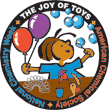Electronic Resources: A to Z
This is a collection of electronic resources (websites, software, etc.). A separate collection of Print Resources is also available.
Key: E = Elementary (K–5), I = Intermediate (6–8), HS = High School (9–12), C = College, G = General Public
- Betcha Didn’t Know. Provided by: Toy Industry Association. (E, I, HS, G)
- Behind every toy, there’s a story as entertaining as the toy itself! Tales include how some toys were invented, how others got their name, and how some famous companies began.
- Chemistry in the Toystore. Provided by: David Katz. (E, I, HS, G)
- David Katz was the first to give a talk about the chemistry of toys and to provide chemistry experiments to investigate or to prepare a number of toy-type materials in the lab or at home.
- Chymist.com. Provided by: David A. Katz. (E, I, HS)
- The official Web site of David A. Katz, Originator of Chemistry in the Toy Store. This web site contains demonstrations and hands-on activities on a wide range of topics to fit specific needs and audiences from preschool to teacher in-service and professional scientists.
- Classic Toys. Provided by: Toy Industry Association. (G)
- Lists first year of introduction and current manufacturer for classic toys still on the market.
- Creative Chemistry. Provided by: Harrogate Granby High School, UK. (E, I, HS)
- Whether you are a teacher, doing chemistry at school, or are simply just interested in chemistry, this site has lots for you.
- Do-It-Yourself Science. Provided by: California Science Center. (E, I, HS)
- You don’t need a laboratory to experiment with science—try some of these fun science activities at home!
- Doctor Slime’s Laboratories. Provided by: Delta College (Bay City, Michigan). (E, I, HS)
- Includes demonstrations and experiments for Mad Scientists, Slimeologists, K-12 Teachers & Home Schooling Parents!
- Dr. Toy’s Guide on the Internet. Provided by: Institute for Childhood Resources. (E, I, HS, G)
- First web site to provide information on the best toys and educational products, as well as, articles, resources, and toy-related links.
- Engaging Science: Online Games. Provided by: Engaging Science. (E, I)
- Play games, have fun, and learn science! Topics covered in the games are life, physical, earth, and space sciences.
- Experiencing Chemistry — The Chemistry of Toys. Provided by: Oregon Museum of Science and Industry. (E, I, HS, G)
- Learn about the chemistry that makes toys and the chemistry that makes toys work. This site also covers chemical reactions, everyday chemistry, biochemistry, industrial chemistry, environmental chemistry, household chemistry, the nature of matter, the chemistry of art, and the chemistry of food.
- Fire Prevention and Firefighting: Polymers That Save Lives. Provided by: The Polymer Science Learning Center. (E, I, HS)
- This resource offers information and activities on polymers that make things fire resistant and aid in fighting fires.
- Good Chemistry Makes It Possible. Provided by: American Chemistry Council. (G)
- Discover the benefits of chemistry in your life. Categories covered are: around the house, personal, entertainment, medical, office and educational, and transportation products.
- History of Toys and Games. Provided by: The History Channel. (E, I, HS)
- Discover the origins of your favorite toys and games. Learn more about the industry’s most successful inventors.
- How Everday Things Are Made. Provided by: The Alliance for Innovative Manufacturing at Stanford University. (E, I, HS, C, G)
- The goal was to introduce kids and adults to the amazing world of manufacturing. Our vision was to teach people about manufacturing, but to do it in a fun way. The best way for this to happen was to actually show things being made. Thus, we have collected over 4 hours of video detailing how things we use everyday are manufactured.
- How Stuff Works. Provided by: HowStuffWorks, Inc. (E, I, HS, G)
- This web site is widely recognized as the leading source for clear, reliable explanations of how everything around us actually works.
- Intersociety Polymer Education Council. Provided by: The Intersociety Polymer Education Council. (E, I, HS)
- Promotes science education by encouraging and facilitating the incorporation of polymer topics in K-12 classrooms.
- International Council of Toy Industries. Provided by: International Council of Toy Industries. (G)
- The health and safety of children throughout the world is the driving force behind ICTI, which promotes international toy safety standards and a responsible attitude to advertising and marketing to children.
- Invention at Play. Provided by: Lemelson Center. (?)
- Explore the playful side of invention and the invention side of play.
- Helping Children with Special Needs Through Toys and Play. Provided by: Letkotek. (G)
- The country’s central source on toys and play for children with special needs.
- Macrogalleria — A Galleria of Polymer Fun. Provided by: University of Southern Mississippi. (E, I, HS, G)
- Learn about polymers and polymer science. Check out “Ton o’ Toys”.
- Macroplex Cinema: Polymers Go Hollywood. Provided by: The Polymer Science Learning Center. (E, I, HS, C, G)
- This web site provides information on what polymers are used in the process of making movies and films.
- NanoKids. Provided by: Rice University. (E, I, HS)
- This web site is dedicated to increasing public knowledge of the nanoscale world and the emerging molecular research and technology that is rapidly expanding internationally. Based on actual anthropomorphic molecules synthesized in the laboratory, the NanoKids visual concept utilizes universally recognized forms exhibiting human characteristics to instruct, motivate, and entertain.
- National Lekotek Center: Helping Children With Special Needs Through Toys and Play. (G)
- The country’s central source on toys and play for children with special needs. Resources section includes links to information (e.g. Top 10 Tips for Choosing a Toy for a Child with Special Needs). There is also an extensive list of links other organizations.
- Paul Lemur’s Activities. Provided by: The Polymer Science Learning Center. (E, I)
- Paul Lemur [a cartoon lemur] offers information on polymers via coloring books, video games, and other activities for kids.
- Plastics in Your Life. Provided by: American Plastics Council. (G)
- Learn about how much plastics have helped shape our modern world.
- Polydelphia. Provided by: The Polymer Science Learning Center. (E, I, HS)
- Polydelphia is a virtual bus tour to all the site’s related areas. Each stop on the tour provides information and activities dealing with aspects of polymers. Flash 5 is required.
- POLYED — National Information Center for Polymer Education. Provided by: POLYED. (E, I, HS)
- POLYED is a consortium of groups interested in science education in general and polymer education in particular. See “About Polymers” for activities by grade level.
- Polymers and People: An Informal History. Provided by: Chemical Heritage Foundation. (I, HS, C, G)
- This online exhibit book shows how polymers and people are the closest partners in everyday life. It begins by introducing the many scientists who developed plastics, rubber, and resins, most notably Wallace Carothers. It then illustrates how polymers are fashioned and outlines their increasing role in our future.
- Polyquarium. Provided by: The Polymer Science Learning Center. (E, I, HS)
- Polymers From the Sea is a virtual expedition into those natural polymers that come from the sea. It offers some past, present, and possible future uses of polymers as well.
- Safe Toys Resource Page. Provided by: St. Joseph Hospital, Orange, California. (HS, C, G)
- Toys are one of the many marvels of childhood, but their safety is oftentimes overlooked.
- Science Behind Glow-in-the-Dark Toys. (pdf) Provided by: Energy Information Administration. (HS)
- In this article and related activity, students will explore the science behind glow-in-the-dark, or photoluminescent, objects.
- Science is Fun: Home Experiments. Provided by: Professor Shakhashiri, University of Wisconsin-Madison. (I, HS, C, G)
- This collection of experiments will add joy to your science experience.
- Science Toymaker Home Page. Provided by: Science Toy Maker. (G)
- Non-commercial site for people who like to roll up their sleeves and make fun, mysterious toys and projects that entice scientific investigation. It is a resource for inspired parents, kids, teachers, teenagers, home schoolers and science fair participants.
- Science Snacks. Provided by: The Exploratorium. (E, I, HS)
- These pages are full of Snacks…but they’re not the kind you eat. They’re the kind you can learn from and have fun with. Exploratorium Science Snacks are miniature versions of some of the most popular exhibits at the Exploratorium.
- Silly Putty University. Provided by: Binney & Smith. (E, I, HS, C)
- Find out the science behind Silly Putty, learn about its history, check out the latest news, or earn your degree!
- Spirits of Toys Past, Present and Future: Learning About How Toys Change to Meet Consumer Demands. Provided by: New York Times Learning Center. (I, HS)
- In this lesson, students explore the evolution of toys and learn how the toy industry has adapted their products in response to advances in technology and changing customer expectations. Review the Academic Content Standards related to this lesson.
- Story of Rubber. Provided by: The Polymer Science Learning Center and the Chemical Heritage Foundation. (HS, C)
- This site is meant to supplement high school and college freshman chemistry classes with the science of macromolecular materials. The story and science of rubber are used as a vehicle for teaching polymer principles, and when possible, reinforcing the principles of basic chemistry as well. It is hoped that the commonplace nature of rubber and the human stories presented in this website will help make chemistry more enjoyable for students and more relevant to their daily lives.
- Terrific Science: Fun Science Resources for Teachers, Parents, and Kids. Provided by: Miami University’s Center for Chemistry Education. (E, I, HS)
- We all benefit from better science education. Today’s students are tomorrow’s leaders, voters, and employees. Miami University’s Center for Chemistry Education (CCE) in Middletown, Ohio, fosters quality hands-on, minds-on chemical education that encourages teachers and students to work together to solve scientific challenges, think critically, and use their powers of observation.
- Toys at the Henry Ford Museum. Provided by: The Henry Ford Museum. (G)
- The Henry Ford has over 10,000 toys and games dating from the early 1800s to the present.
- What’s That Stuff?. Provided by: American Chemical Society. (G)
- This site puts science into everyday life, with informative descriptions of the chemistry behind the products we use on a regular basis.
Copyright © 2005 American Chemical Society


